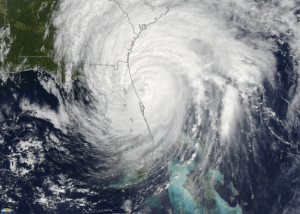As we approach the next Atlantic tropical season, it’s interesting to read about hurricane research and what it might tell us about how hurricanes behave. It helps explain why Hurricane Matthew stayed just off the coast and did not intensify as much as was feared along Florida’s East Coast.
A story from the University of Wisconsin discussed why “active Atlantic hurricane periods, like the one we are in now, are not necessarily a harbinger of more, rapidly intensifying hurricanes along the U.S. coast” but that in active periods hurricanes might actually weaken more as they approach the coast than during less active periods. You can read more at https://news.wisc.edu/more-frequent-hurricanes-not-necessarily-stronger-on-atlantic-coast/.
In a related story, USA Today reported that “the U.S. appears to have a “buffer zone” near the coast that’s protected the country from intense hurricane strikes over the past 20 years, according to a new study. This protective barrier along both the East and Gulf Coasts, marked by strong crosswinds and cooler water temperatures, prevents hurricanes from intensifying as they near the U.S.”. You can read that story at https://www.usatoday.com/story/weather/2017/01/04/buffer-zone-hurricanes-wind-shear/96159510/.
Time magazine noted that “cool ocean temperatures combine with strong vertical wind shear, a measure of how quickly wind changes speed or direction, off the Atlantic coast. Faced with those conditions, major hurricanes tend to slow down.” You can read their story at https://time.com/4620856/hurricane-drought-global-warming-climate-change/?xid=newsletter-brief.
